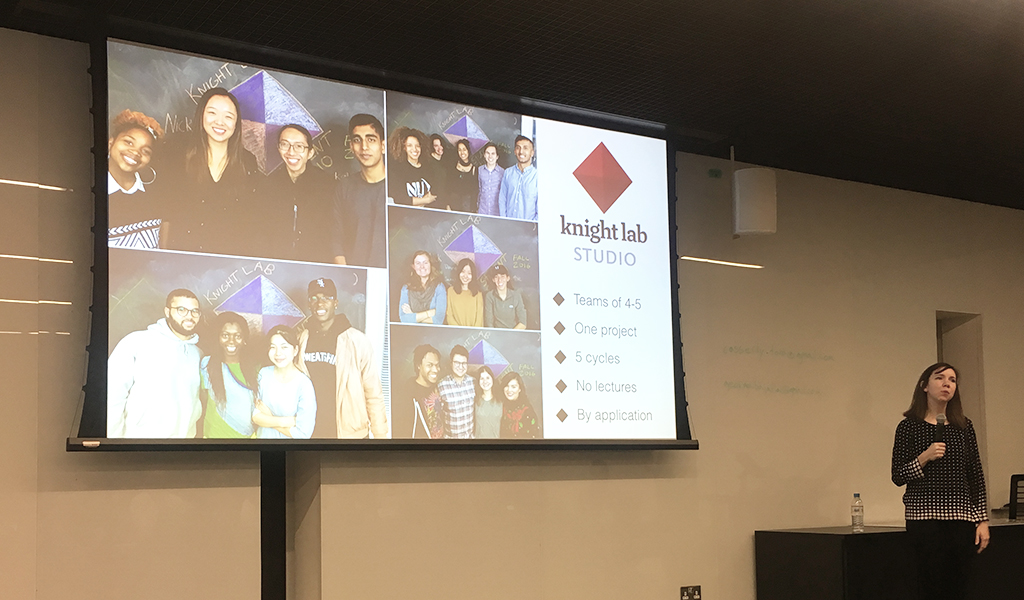Two Northwestern University faculty members from the Knight Lab in Evanston discussed ways to use emerging technologies in journalism during several meetings at NU-Q. Emily Withrow and Zach Wise, directors at Knight Lab’s creative software development studio, used the latest technology to demonstrate how storytelling can be reconsidered in new digital spaces.
“The concepts of great storytelling never really change; they consist of developing characters, and building a story arc and plot. What we like to do is look at new platforms and figure out how to craft the best storytelling in those spaces,” Withrow said. “What do emerging technologies have to offer and what are the best ways to use them?”
At a workshop with faculty and staff they discussed basic elements in design thinking through prototyping and how to problem-solve creatively with these technologies. Faculty and staff who attended the session brainstormed and designed content using new platforms.
At a community meeting, students were encouraged to adapt Knight Lab’s approach and Withrow and Wise recommended that NU-Q consider collaborating with Carnegie Mellon, a partner university in Education City, to create software that could develop more interactive stories for the digital age.
At the Knight Lab in Evanston designers, developers, students, and educators test new ways of using technology to tell stories in different forms. It produces software, digital tools, and prototypes that are used by leading news agencies and organizations, including NPR, Medium, FiveThirtyEight, The Washington Post, and more. One such experiment involves delivering ‘conversational news’ by creating devices similar to the Amazon Echo and Google Home.
“News media must find economical ways to get ahead of the curve, to be ready to produce and distribute news on platforms before they saturate the market,” Wise said.
The lab is best known for a series of innovative tools for the media. The most popular, TimelineJS, has been used by more than 250,000 people to tell stories seen hundreds of millions of times and is available in more than sixty languages. The tool was used by TIME magazine to tell the life story of the former president of South Africa, Nelson Mandela; and by the International Business Times to track the expansion of ISIS-controlled territory.
“How we interact with computers is changing,” Wise said, comparing early depictions of robots in popular culture to the use of smartphones today. “If you want to think about what is next, just think about how you would interact with technology as if it were a human being.”

